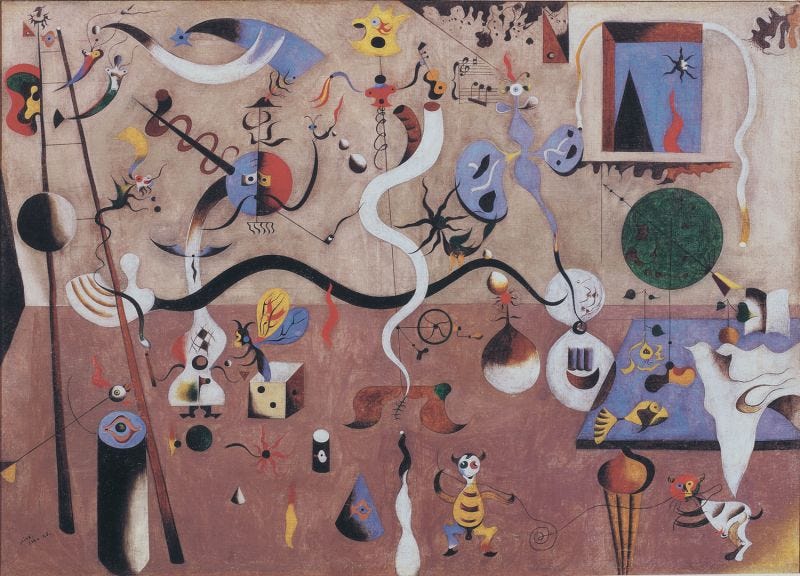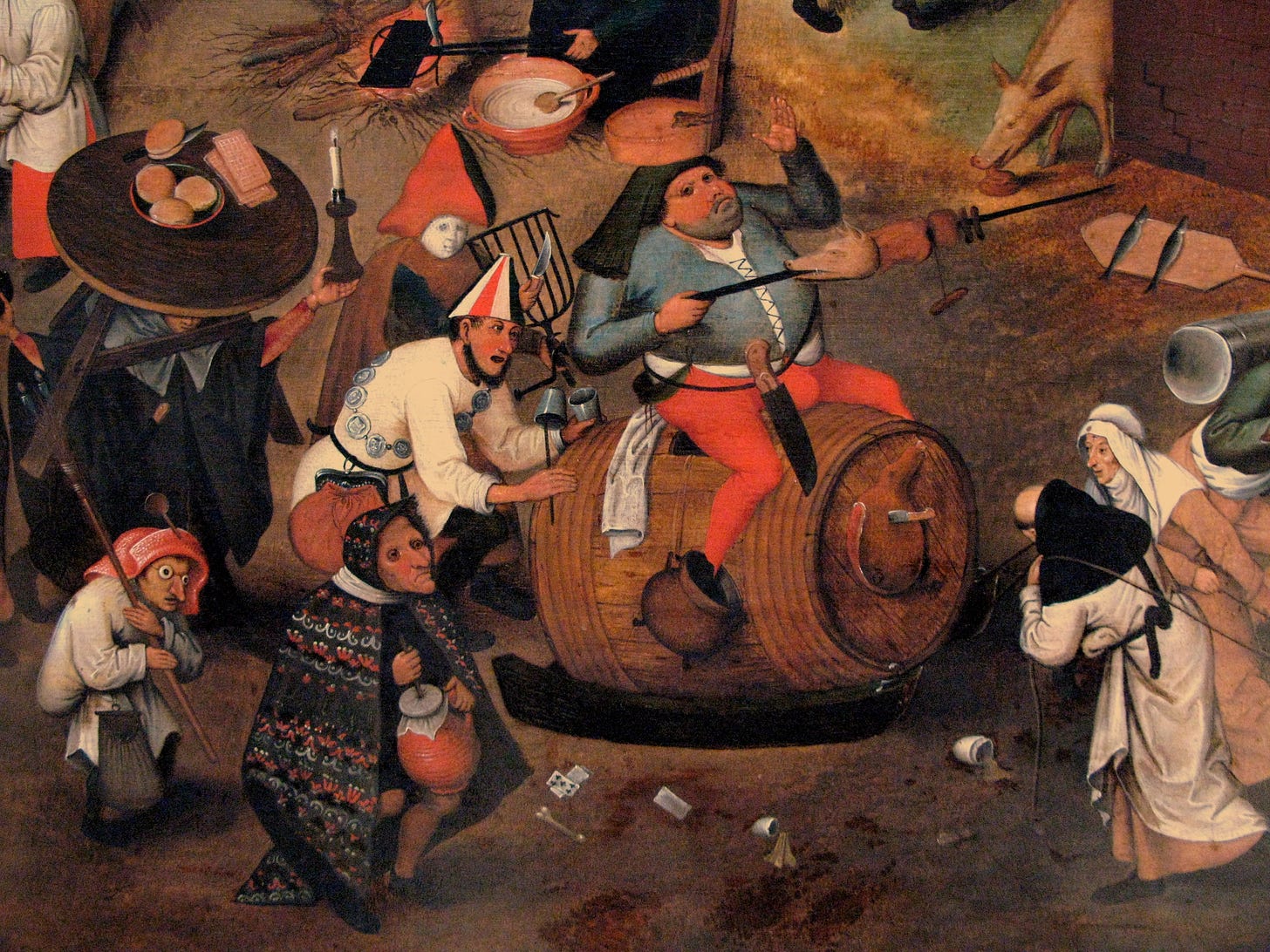One evening in February of 1986, I opened the door to my apartment building, and instead of hearing the usual street sounds, I was knocked backwards by a wall of sound pulsating from the night city.
At work, there has been talk for weeks of the laborious preparations for the parades, the week-long holiday we’d have, and the processions we’d see. I confess I’d felt a little detached, even above it all. It seems like a waste of time and effort, I said (it’s a wonder I later had anyone to dance with).
But sometimes life teaches you an unexpected lesson. Nothing I’d been told had prepared me for what had now arrived in all its cacophonic glory: Carnival.
Carnival: “The merrymaking and festivity that takes place in many Roman Catholic countries in the last days and hours before the Lenten season.” The official definitions can make it sound quaint or merely picturesque, a holiday attraction for the jaded leisured classes.

And just a year or so before, studying my MA in comparative literature, I’d come across the Russian linguist and literary critic Mikhail Bakhtin, who’d used the term “carnivalesque” to “characterise writing that depicts the de-stabilisation or reversal of power structures, albeit temporarily, as happens in traditional forms of carnival.” Some saw in this kind of writing hope of radical subversion of the order of things leading, potentially to revolution. But I’d probably side with Terry Eagleton’s view in his book on Walter Benjamin:
Carnival, after all, is a licensed affair in every sense,a permissible rupture of hegemony, a contained popular blow-off as disturbing and relatively ineffectual as a revolutionary work of art. As Shakespeare's Olivia remarks, there is no slander in an allowed fool. 1
But I’ll be honest. Once I opened that door that February evening in Santa Cruz de Tenerife, any such thoughts seemed instantly irrelevant. Dictionary definitions and academic debates about the revolutionary potential of the term were powerless against the pulsing sounds coming from the city centre. For me, as for hundreds of thousands of people out in the streets every night that week, it became instantly clear that carnival was about music, laughter, and above all about the community of dance.
So no, we weren’t quoting Bakhtin, but rather the words of Billo’s Caracas Boys, “disfruta las cosas buenas que tiene la vida.” And the texts we paid attention to were not to be found in a university library but were sung right there in the street with us by Celia Cruz.
Cruz was the presiding deity of Carnival in Tenerife. With songs like Cúcala and Usted Abusó, she ensured that her acolytes—us—would spend the warm Canarian nights gyrating and shuffling our bodies until exhaustion would overcome us at dawn. But this wasn’t an act of protest, nor was it a rite of worship. It was a simple, collective celebration of the joy of music and dance.
Carnival in Tenerife—the envy of their Canarian rivals in Las Palmas de Gran Canaria—was reputed in those days to be the biggest celebration of its kind in Europe and second only to Rio de Janeiro. I don’t know whether that’s true now—or indeed was ever true. But in that small city of Santa Cruz, it certainly felt huge.
Just off the coast of Africa, though not really connected to the continent, the Canaries had long served as a bridge between Europe and Latin America. Almost everyone I knew had a relative who lived in South America, and the Spanish spoken there is closer to that of the Americas than the Spanish peninsula. So it felt natural that the music of carnival came from Venezuela or Cuba.
It also felt as if the population of the city had doubled. It wasn’t really a tourist event in those days. So where had all the dancing masses come from?
The city was transformed. Stages were erected, food stalls crammed with colour and tastes crowded the avenues that I’d only known as busy thoroughfares until then and if the music was in reality piped to us via loudspeakers, it actually seemed simply to fall out of the soft Atlantic sky for us to bathe in.
And we danced. Badly (in my case) or with rhythm and grace (everyone else, it seemed to me), but it was the motion and the music and the mute smiles of friends and strangers alike that mattered. We grinned like fools, muttering snatches of the lyrics from songs we’d already heard twice before that night, and it was like dancing for the first time. Before that, I’d self-consciously shuffled to 80s pop in rooms or clubs while at university, without much skill or rapture. But this communal joy was different. It wasn’t about individual dancers. It was a collective rhapsody of movement.
It was the following year that the organisers (and I felt almost surprised that even festivals of pure joy need organisation) arranged for an attempt on the world record for the number of people dancing in the same place to the same tune (Celia Cruz’s tune, of course). I was there in that throng, one of two hundred and fifty thousand that night. But it’s not an old entry in the Guinness Book of Records that will live in the hearts and bodies of those who were there, but the unique sense of togetherness, even of hope, that carnival inspired in us.
One of Celia Cruz’s most famous songs is her version of Tito Puente’s 1963 classic, “Oye como va.” This song is fundamentally a celebration of music and dance. The title means “listen to how it goes,” encouraging us all to pay attention and join in. And the words include:
Que venga toda mi gente, mi gente
Para que goce el tumbao.
“Let all of my people come to enjoy the “tumbao.” The tumbao is the rhythm running through the music that “allows the dancers to feel the music like never before.”
And that’s what we did. For days that passed well into Lent (cheerfully ignoring the religious logic of carnival), we were able to listen to how the music went and feel the “tumbao.” The processions marched through the streets, and we duly cheered friends or neighbours who’d been involved in the lengthy preparations for this moment of glory. But it was the sound and the rhythm of the dance that stayed with us, long after the parades had finished and the cheering had died down.
Cruz died in 2003 after an astonishing career that saw her become a major influence on Latin American music. But the joyous fervour of the music and the intoxicating rapture of the dance live on in the memories of those who heard her during carnival.
“No no pierdas tiempo” is a line from her Cúcala. “No, don’t waste time.” I got the message and made the most of that special celebration. My pre-carnival English smugness and reserve had dissolved at the first contact with this intoxicating event. Well before the end of my first carnival week, I knew that the moments spent on those rapturous nights would be among the most precious I’d ever have.
https://www.penguinrandomhouse.com/books/232664/walter-benjamin-by-terry-eagleton/ p.148








“I opened the door to my apartment building, and instead of hearing the usual street sounds, I was knocked backwards by a wall of sound pulsating from the night city.”
That line alone was enough of an invitation to relive and enjoy the carnival with you!
Having just passed through Carnival in Sitges, I can attest it is like Halloween, Fourth of July, and Gay Pride all rolled up into one. (Except that we also have Saint Joan for fireworks, and actual Pride in June.) Despite all that, it is only just now occurring to me after reading - "Mikhail Bakhtin, who’d used the term “carnivalesque” to “characterise writing that depicts the de-stabilisation or reversal of power structures, albeit temporarily, as happens in traditional forms of carnival” - that the parallels with the Dionysian mysteries/Bacchae are unmistakable. Thanks to you... :)